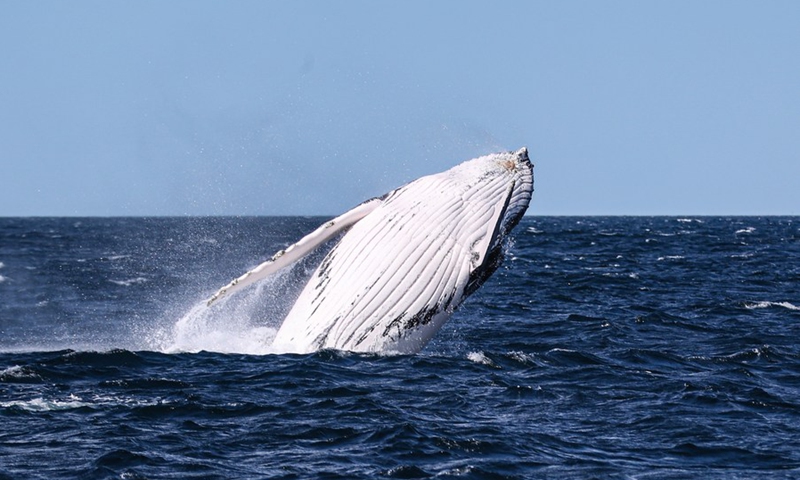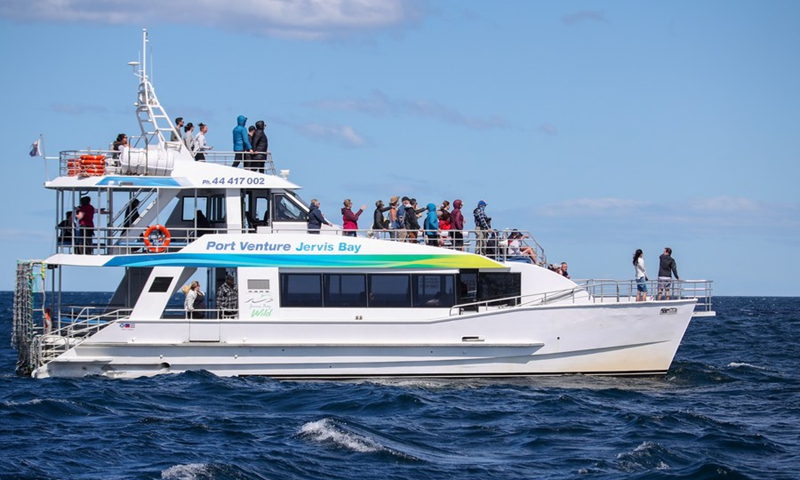
File photo taken on Sept. 23, 2020 shows a humpback whale springs out of water in Jervis Bay, south of Sydney, Australia. (Photo: Xinhua)

File photo taken on Sept. 23, 2020 shows tourists take a cruise boat for whale watching in Jervis Bay, south of Sydney, Australia.(Photo: Xinhua)
With migrating humpback whales now moving north along the eastern coast of Australia, the state of Queensland has imposed new restrictions on Wednesday to safeguard the giant marine mammals.
It is expected more than 25,000 whales will travel along the eastern coast until August, and back towards the Southern Ocean from September to November.
Their migration attracts thousands of spectators in boats, however, getting too close to a whale can cause dangers, as humpbacks can breach over the top of a vessel.
An adult humpback can weigh about 40 metric tons and their swimming movements are unpredictable during their migration.
The Australian Broadcasting Corporation (ABC) reported that a man and his stepson were hospitalised in the state of New South Wales after a whale landed on the boat's deck in early June.
The teenager got serious head injuries and a suspected spinal fracture, and the man was treated for a suspected concussion and facial cuts.
The authorities urged boating enthusiasts and jet skiers to be wary of whales during the coming months.
To reduce the risks, the authorities have ordered boats must stay at least 100 meters from whales, while personal watercraft like jet skis must maintain at least 300 metres away.
To protect whales from being struck by boats, skippers must not travel faster than 6 knots or create a wake within 300 meters of a whale pod.
Moreover, drones must not be flown any closer than 100 meters to a whale.
Fines are a minimum of 667 Australian dollars (about 513 U.S. dollars) to 16,014 Australian dollars (about 12,311 U.S. dollars) for non-compliance.
